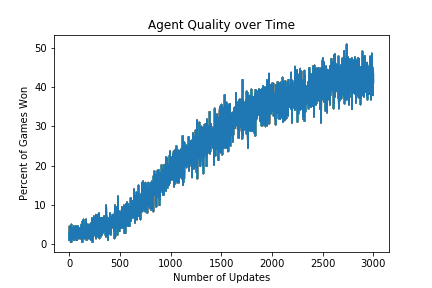Authors: Markram, Muller, Ramaswamy, Reimann, et alia
Published: 2015
Link: http://www.cell.com/abstract/S0092-8674%2815%2901191-5
Summary
The scientists of the Blue Brain Project discuss their work to recreate the circuitry of the somatosensory cortex of a rodent brain in silico (on a computer). Basically, the authors digitally reconstructed a column of neocortical tissue, incorporating multitudinous neuron types and connections, all of which were modeled to behave as they would in vivo. The validity of the digital reconstruction was shown by testing it against experimental observations/data not used to inform the reconstruction. Generally, the simulated neural activity mirrored empirical neural activity. The authors note that this suggests that the reconstruction may be useful as a platform for “in silico neuroscience”. Indeed, the paper details the simulation’s ability to make predictions about in vivo neural activity, and the simulation’s usefulness in probing the microscale cellular/synaptic mechanisms that underlie macroscale neural activity.
Building a Brain
The target of the simulation was the rodent somatosensory cortex, the main sensory receptive area for touch. The approach was to reconstruct a single column (microcircuit) of this cortex, generate slight variations of this microcircuit, and join together multiple microcircuits to make a mesocircuit (from which a digital slice of neocortical tissue could be taken for experimentation/simulation).
Experimental findings and mathematical models to describe neural behavior were accounted for in the reconstruction of the microcircuit:
- Patch-clamp recordings revealed 55 unique neuronal morphological classifications, and neuronal firing patterns suggested 11 unique neuronal electrical classifications. Accounting for each classification type, there were 207 unique morpho-electrical types of neurons modeled.
- Neurons were connected via placement of synapses at appositions of neuronal arbors.
- Behavior of each neuron type was modeled through the neuron-type-appropriate assignment of “Hodgkin-Huxley-type models of 13 known classes of ion channels along the neuronal arbors.”
- Cell staining experiments revealed the depth of, the excitatory/inhibitory balance of neurons at, and the frequency of different m-types at each of the six layers of the neocortex. These experiments dictated the assignment of neurons into the digital microcircuit, which is a 2,000-micron-tall structure with approximately 31,000 neurons.
- The microcircuit’s activity was simulated with a variant of the NEURON simulator.
Discussion of Results
In the simulation, the level of calcium in the extracellular space (modeled as the probability of neurotransmitter release) determined where along the synchronous-asynchronous [SA] spectrum the neuron firing was. Higher levels of calcium led to slow oscillatory bursting, as opposed to asynchronous irregular activity. New in vivo experiments showed the same pattern.
Near the transition between the synchronous and asynchronous states, a number of in vivo phenomena emerge in the simulation. These phenomena include neuron triplets (trios of neurons with precise temporal relationships in their spiking), and soloist and chorister neuron firing patterns (firing in a manner that is uncorrelated with the group and correlated with the group, respectively).
In general, the simulation was capable of mimicking the results from experiments that were not used in the construction of the microcircuit. For example, in vivo studies show that the response characteristics of neurons depend on the type of neuron and the layer in which it exists. The authors simulated a rodent whisker deflection in silico, and the neuronal responses varied depending on cell type and layer in a manner consistent with experimental findings.
Perhaps most interestingly, the in silico reconstruction possesses the ability to test hypotheses. Since at least the early 2000s, there has been disagreement on the cause of uncorrelated neuronal spiking. One hypothesis is that correlated excitatory activity is cancelled out by anti-correlated inhibitory activity. In the simulation of the microcircuit, this exact process (correlated excitatory conductances cancelled out by anti-correlated inhibitory conductances) was observed. This finding demonstrates that the simulation can provide insight into the causes of higher-order activity.
Looking forward, the reconstruction/simulation of the microcircuitry can be refined in many ways. For example, gap junctions, receptors, glia, etc. can be added to the model. In addition, only one component of the brain was reconstructed, and the Blue Brain Project aims to simulate an entire brain.
Notable References/Resources
The portal linked to above offers researchers the ability to perform analyses and test hypotheses using the microcircuitry detailed in the paper.

